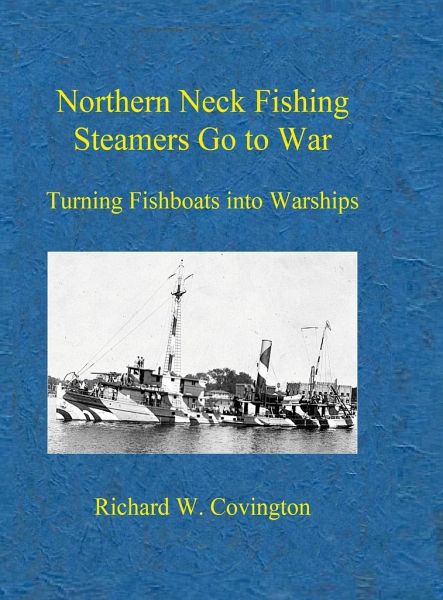
Northern Neck Fishing Steamers Go to War
Turning Fishboats into Warships
Versandkostenfrei!
Versandfertig in 1-2 Wochen
28,99 €
inkl. MwSt.

PAYBACK Punkte
14 °P sammeln!
In 1917 eight wooden-hull, steam-powered fishing boats from the Northern Neck of Virginia were "conscripted" into service by the U. S. Navy, equipped with cannons, and sent on a journey across the Atlantic Ocean to France, where they patrolled for submarines, swept for mines, and rescued fellow ships and sailors under dangerous conditions. Although it seems too incredible to be true, it is a factual, amazing, and little-known piece of history. This is an authentic and exciting account of the small, extensively modified Chesapeake Bay Menhaden fishing boats and their brave crews, who dutifully ...
In 1917 eight wooden-hull, steam-powered fishing boats from the Northern Neck of Virginia were "conscripted" into service by the U. S. Navy, equipped with cannons, and sent on a journey across the Atlantic Ocean to France, where they patrolled for submarines, swept for mines, and rescued fellow ships and sailors under dangerous conditions. Although it seems too incredible to be true, it is a factual, amazing, and little-known piece of history. This is an authentic and exciting account of the small, extensively modified Chesapeake Bay Menhaden fishing boats and their brave crews, who dutifully performed hazardous tasks in the dangerous waters of France under perilous wartime conditions in an operation few people have ever even heard of. This book provides documentation of an actual U. S. Department of the Navy operation that originated simply because the Navy didn't have adequate minesweepers and patrol boats to send to France when the U. S. entered WWI. This book uses Naval Department records to present the who, what, when, where, how, and why of the massive endeavor. The Norfolk Navy Yard performed nothing less than a miracle in making the extensive modifications necessary for turning the fishboats into warships. Although these boats were rugged in construction, they were designed for commercial fishing in the Chesapeake Bay and were never intended for ocean crossings or military use. Remarkably, those vulnerable boats, designated Squadron Four Atlantic Fleet Patrol, made the risky journey from Boston to Brest, France in just 22 days, arriving safely in September 1917. The boats and crew completed their orders admirably. Only one of the boats sank while in service; however, three boats sank in a storm during a disastrous attempt to return to the United States. Two of the boats that sank belonged to the author's grandfather, Otis W. Douglas. This book includes interesting personal accounts from crew members, 26 pictures of the iconic wooden-hulled, coal-fired steamers that were used to fish in the Bay, as well as information about all the boats that comprised the Northern Neck menhaden fishing fleet in 1917, including those that were not commissioned into service. If you have an interest in boats, naval history, WWI history, and Chesapeake Bay history, this is the book for you. (8.5" x 11", 65 pages, 16,300 words, 26 photos, 16 document images, 97 footnotes)












